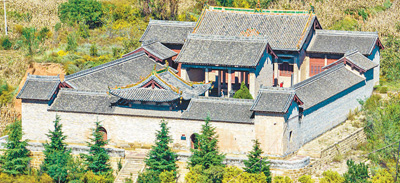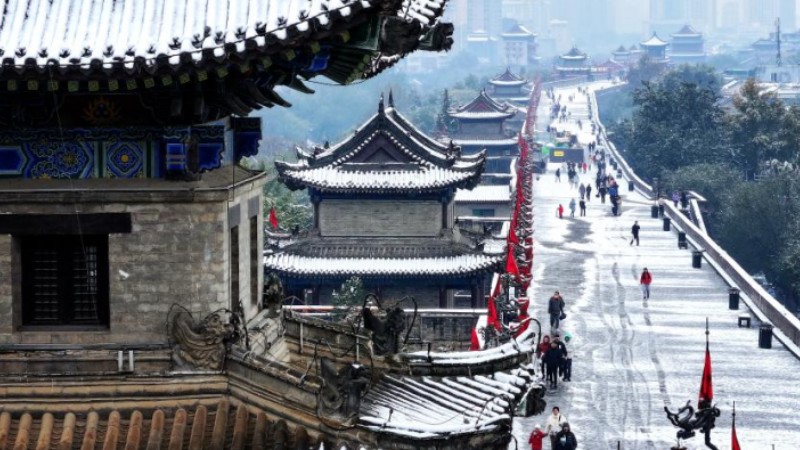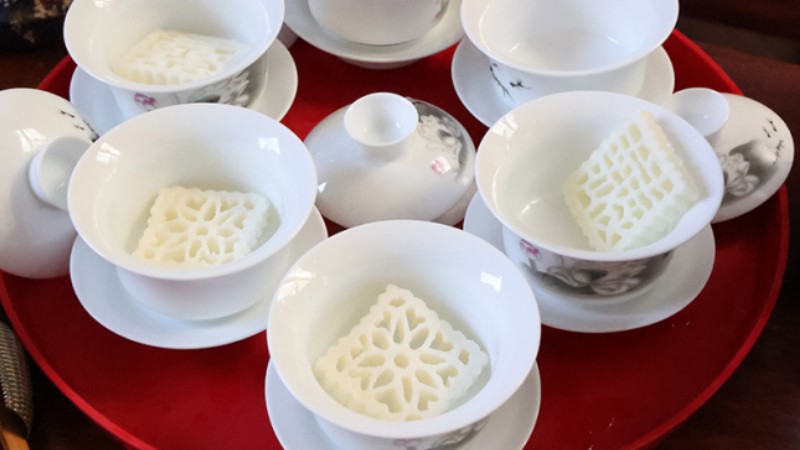Ancient buildings glow with new vitality in Gaoping, N China's Shanxi

An ancient stage in Wangbao village, Gaoping city, a county-level city overseen by Jincheng city in north China's Shanxi Province. (Photo courtesy of the Publicity Department of the Communist Party of China Gaoping Municipal Committee)
Referred to as the "museum of ancient Chinese architecture," Gaoping city, a county-level city overseen by Jincheng city in northern China's Shanxi Province, has been diligent in preserving its ancient structures, infusing them with renewed vigor.
The city, with roots tracing back to the Spring and Autumn Period (770-476 B.C.), hosts 22 key cultural relic sites under state protection and 1,574 registered immovable cultural relics, equating to 1.7 immovable cultural relics per square kilometer.
Kaihua Temple, nestled on a mountain in Chenqu town, is a key cultural relic site under state protection renowned for its magnificent frescoes from the Northern Song Dynasty (960-1127). The temple has been meticulously preserved, morphing into a popular tourist attraction.
Residents of Gaoping cherish and safeguard ancient buildings, with many having resided in these ancient structures since childhood, becoming custodians of these treasures, says Chang Silong, 77, the first curator of the Gaoping Museum.
Wang Gaiying, a villager in Mixi village of Mishan town, is one such guardian. Wang's compound is home to Tiefo Temple, also a key cultural relic site under state protection. The temple was named after an iron-made Buddha statue during the Jin Dynasty (1115-1234) and now has 24 vivid sculptures of deities.
Wang, in his 70s, tends to the cleaning around the temple daily. "I've been doing this all my life. Several generations of my family have lived here alongside Tiefo Temple," Wang shared.
In the 1950s, Wang's mother-in-law became the guardian of the temple, and later Wang followed in her footsteps. "This is my home, and protecting it has become my responsibility," Wang said.
An exhibition held by the Central Academy of Fine Arts (CAFA) in 2016 displayed high-definition photos of Tiefo Temple, bringing the temple's cultural and artistic values to more people. The CAFA later established a teaching base at the temple.

A view of Xuzhuang village, Beicheng neighborhood, Gaoping city, a county-level city administered by Jincheng city in north China's Shanxi Province. (Photo courtesy of the Publicity Department of the Communist Party of China Gaoping Municipal Committee)
Gaoping Museum held digital exhibitions on Kaihua Temple and Tiefo Temple, attracting many visitors, including Wang. "I have been protecting the temple for many years and I want to understand its artistic values better," she said. Nowadays, Wang's daughter and granddaughter have joined her efforts to protect the temple.
"Gaoping boasts many key cultural relic sites and even more immovable ancient buildings. To truly protect them, we need to rely on the residents living near these ancient structures," said Chang.
"Fortunately, after years of effort, many people have come to love and understand these ancient buildings more deeply. Thanks to scientific guidance, 'coexisting with ancient buildings' has become a feasible lifestyle, which ensures the protection of ancient temples and cultures," Chang added.
In Gaoping, nearly every village has stages for the Shangdang clapper opera, a traditional opera of Shanxi, with such stages often located opposite ancient temples.
Xuzhuang village in the Beicheng neighborhood boasts many ancient stages constructed during the Ming (1368-1644) and Qing (1644-1911) dynasties.
However, for many years, the stages lay abandoned as young people pursued work outside the village, rendering the community unable to organize opera performances.
In recent years, the thriving development of the cultural and tourism industry in rural areas has rejuvenated interest in opera.
Now, opera performances are staged not only during holidays and festivals in Xuzhuang village but also on weekends when tourists visit the village.
Gaoping's Suzhuang village, nationally recognized as a historical and cultural village and a traditional Chinese village, is home to 24 well-preserved ancient compounds dating back to the Ming and Qing dynasties, holding a nostalgic charm for many.
Over the past years, Gaoping has engaged professional teams to restore ancient compounds in Suzhuang village to their original appearance.
"Only by utilizing ancient buildings appropriately can we maintain their vigor," said Chang.
Therefore, Gaoping has further delved into its history and folk customs, developing a brand for Suzhuang village and providing various services, including sightseeing tours, showcasing wedding customs, and offering accommodation and leisure activities.
Due to these endeavors, Suzhuang village is emerging as a new landmark in Gaoping, thriving in the cultural and tourism industry.
Gaoping's extensive history and invaluable cultural treasure have infused endless vitality into the city's flourishing development, remarked Yuan Jian, Party chief of Gaoping city.
"People often speak of nostalgia, but for Gaoping, properly preserving and developing its ancient buildings sustains people's nostalgia and allows tourists to delve into history," Chang stated.
Photos
Related Stories
- Experiencing the historic city of Jincheng in N China's Shanxi
- Trending in China | Shanxi mature vinegar
- China's Shanxi raises coalbed methane output to meet winter heating demand
- In pics: Yanmen Pass in Daixian County, north China's Shanxi
- Health and wellness industry conference to kick off in N China's Shanxi
Copyright © 2023 People's Daily Online. All Rights Reserved.









